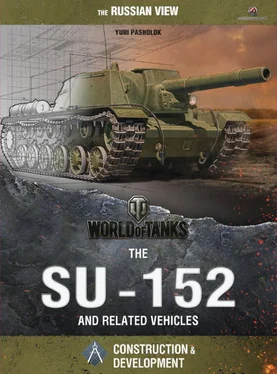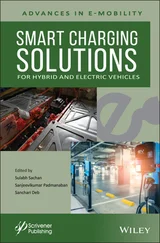1. A bunker buster mounting the BR-2 152 mm gun on a chassis incorporating assemblies from the KV tank.
2. A tank destroyer mounting the 85 mm antiaircraft gun on a chassis incorporating assemblies from the T-34 tank.
3. A regimental assault gun mounting the 76 mm USV or the ZIS-3 on a chassis incorporating assemblies from the T-60 tank.
4. Self-propelled antiaircraft guns:
a) A 37 mm gun on the T-60 tank
b) A 25 mm gun on the T-60 tank
c) A 37 mm gun on the T-50 tank
d) A 37 mm gun on the T-34 tank
Comrade Kotin has accepted the recommendations for these self-propelled guns and stated that he would issue the appropriate orders to the factories.
I believe it is urgent that an operational requirement be sent to the People’s Commissariat of Medium Machine Building and the factories, that a GABTU representative visit the People’s Commissariat of the Tank Industry, and that the systems listed in the work schedule be pursued. A liaison visit should be made to the factories that are beginning work on the projects and appropriate advice should be given. {3} 3 TsAMO RF, collection 81, series 12038, file No. 115, pp. 16–17.
This letter marked the initiation of wartime development of SP guns. Beginning in November 1941, work intensified on many of the SP gun projects named in the draft decree of the Council of People’s Commissars of the USSR and the Central Committee of the All-Union Communist Party (Bolshevik) “On Self-Propelled Artillery” that was issued on May 27, 1941. Operational requirements were still being drawn up prior to 1942; however, conceptual designs were not even being discussed. Most of the factories assigned to develop SP guns were either still in the process of setting up production lines at the sites to which they had been evacuated in the summer and fall of 1941, or they had been loaded down with more urgent orders. Nevertheless, the development plan for 1942 again featured the “KV-3 Tank” project with a completion date of May 1, 1942. The project also included a “1200 hp two-stroke diesel engine” (with a completion date of October 1, 1942) and a “supercharged 1200 hp V-2 diesel engine” (to be completed by July 1, 1942).
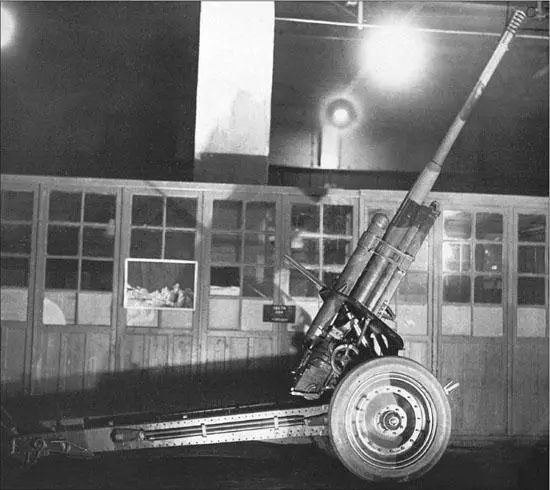
Instead of SP guns, in the fall of 1941 UZTM was actively working to develop new conventional artillery pieces like the U-10 85 mm antitank gun shown in the photo (TsAMO).
The project bearing the title “A 152 mm Self-Propelled Gun Incorporating Assemblies from the KV Tank Chassis” (a bunker buster) surfaced again in March 1942. The KV tank was specified as the base chassis, and the armament was to include the tipping parts from the BR-2 gun. Pilot Plant No. 100 (established in Chelyabinsk in 1942) of the People’s Commissariat of the Tank Industry was given responsibility for the chassis, and Factory No. 8 of the People’s Commissariat of Arms at its new location in Sverdlovsk was to be responsible for the gun. The amount allocated for development was 1.5 million rubles, and a prototype was expected by July 1, 1942. However, the KV-3 project was finally killed in the spring of 1942, and an entirely different vehicle began to be considered as the base chassis for the bunker buster.
CHAPTER 4.
A Personal Order from Stalin
On November 28, 1941, a report from P. F. Solomonov on his trip to Chelyabinsk reached the desk of Military Engineer 2nd Class Anisimov, chief of the Field Artillery Armament Directorate’s 2nd Department. The purpose of his trip was to look into the availability of the KV-1 tank’s armament. The report addressed development in addition to gun supplies. In November 1941, A. N. Bulyshev was managing development of the U-11 and U-12 systems, which involved mounting the M-30 122 mm howitzer and the 52-K 85 mm antiaircraft gun in the KV-1’s turret. The report’s third paragraph is of much greater interest to us.
By order of Joseph Vissarionovich Stalin, the Kirov Factory is developing a triple mount for the KV: One F-34 gun and two 45 mm guns (barrels without recoil mechanisms), with the recoil mechanisms for the triplex taken from the ZIS-5. No 360° field of fire; angle of traverse +/-15° or +/-7.5°, as allowed by the installation; basic load 300 rounds (100 for each weapon); in addition, the triplex to have 3–4 machine guns.
In December, the factory must equip 1/5 of all KV tanks with these triplex systems.
The factory urgently needs the drawings and engineering analysis of the 45 mm tank guns, drawings and engineering analysis of the F-34 (they can make do with on-hand blueprints of the F-34, but the engineering analysis is necessary), and drawings for the ZIS-5 cradle (ruggedized).
The factory also urgently needs four 45 mm tank gun barrels together with their breech mechanisms and, in preparation for testing the triplex, a location, ammunition, and a test program. It is crucially necessary to solve the problem of sights for the triplex. {1} 1 TsAMO RF, collection 81, series 12104, file No. 79, p. 181.
A note dated November 29, 1941, attached to the report reiterated the identity of the person who initiated development of the vehicle:
By personal order of People’s Commissar of Defense Comrade Stalin, the Kirov Factory (ChTZ in Chelyabinsk) is developing a triple mount for the KV tank (two 45 mm tank guns and one F-34 76 mm gun).
Urgently deliver four 45 mm tank guns to the Kirov Factory for development of these mounts.
To support the planned total production of KV tanks equipped with triple mounts, by December 1941 the Kirov Factory needs to take delivery of 180 45 mm tank gun barrels with breech mechanisms minus the cradle, recoil mechanisms, semiautomatic mechanisms and optics; and it needs 260 such items by January 1942. {2} 2 TsAMO RF, collection 81, series 12104, file No. 79, p. 182.
This unconventional vehicle, which was assigned the factory code 227 and the designation KV-7, was dictated by a desire to increase the KV-1’s firepower. The ZIS-5 76 mm gun fitted to the Chelyabinsk KV-1 was sufficient to defeat enemy tanks, but requests came from the fronts to increase firepower for combating non-armored targets, including light field fortifications. Conceptually, the triple mount would enable the guns to be fired both separately and simultaneously.

KV-7 assault tank, December 1941(TsAMO).
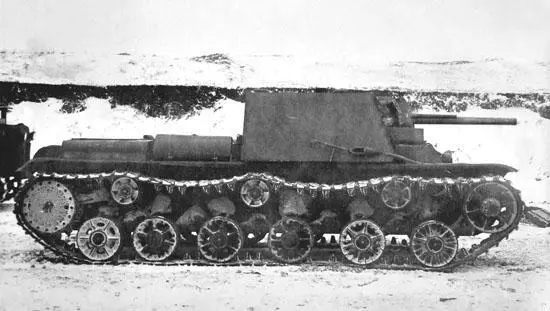
Side view of a KV-7 (TsAMO).
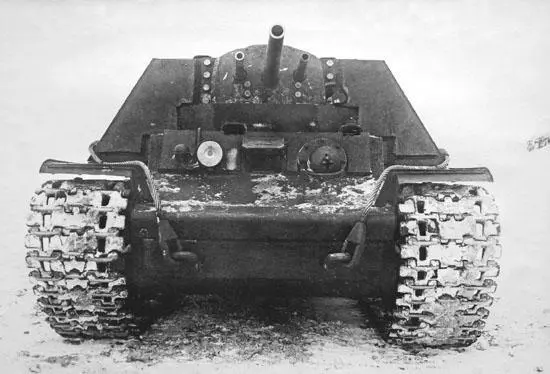
Front view of a KV-7; the tank’s massive mantlet and the skirt underneath it are clearly visible (TsAMO).

Rear view of the KV-7 (TsAMO).
A group of SKB-2 designers led by G. N. Moskvin that had been evacuated to Chelyabinsk was assigned to solve this non-trivial problem. Because the triple mount did not fit into the standard KV-1 turret, a decision was made to install a superstructure in its place (in correspondence, this superstructure was called a “non-rotating turret”). To provide normal working conditions in the fighting compartment for the crew, the superstructure was given the shape of a prism, and its bottom extended over the tracks. In constructing the superstructure, maximum use was made of parts from the KV-1 turret, including the rear machine gun’s ball mount, turret hatch covers, and vision blocks. Recovery tank No. 5161, which had been produced in September 1941, was used to build a KV-7. According to the records, the vehicle was initially equipped with an M-17T engine, and it had seen action on the Leningrad front.
Читать дальше
